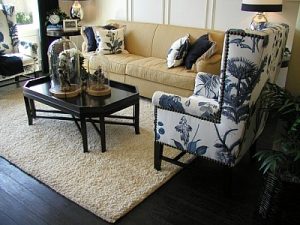Furniture is more than just a collection of functional items; it is an integral part of your home’s personality, helping to define spaces, enhance comfort, and reflect personal style. Whether it’s for a living room, bedroom, or office, the right furniture can transform a room into a functional, aesthetic, and comfortable environment. In this guide, we’ll explore how to choose the right furniture for your space by considering its color schemes, uses, and functions. By taking a professional and detailed look at each of these elements, you’ll be equipped to create spaces that are both beautiful and functional.
1. Understanding the Function of Furniture
Before considering aesthetics like colors and styles, the primary focus should be on the function of each piece of furniture. Functionality refers to how the furniture serves the space and the people using it. Ask yourself: What is the purpose of the room? What activities will take place there? How will the furniture enhance these activities?
a. Living Room Furniture
The living room is usually the central area of social interaction and relaxation in a home. The essential pieces of furniture in a living room include:
- Sofas and Chairs: These are designed for seating and comfort. They should be arranged to facilitate conversation and provide a comfortable space for leisure.
- Coffee Tables and End Tables: These offer surfaces for drinks, books, and decorative items, serving both functional and aesthetic roles.
- Entertainment Units: If your living room includes a television or sound system, an entertainment unit or console helps organize electronic devices and cables, keeping the space clutter-free.
- I recently bought a sofa in this site is quite good, cheap and cost-effective, if you need to click the link to see! https://www.pntrac.com/t/4-479246-329981-264053

For functional purposes, comfort and durability are key. Choosing furniture made from high-quality materials such as solid wood, metal, or upholstered fabrics ensures longevity. Modern living room furniture often incorporates multipurpose designs like modular sofas that can be adjusted to different configurations, or ottomans that double as storage.
b. Bedroom Furniture
The bedroom is a personal retreat focused on relaxation and sleep, so furniture should promote comfort and tranquility. Key pieces include:
- Bed Frames and Mattresses: The bed is the focal point of any bedroom, so choosing the right frame and mattress is critical for both style and comfort.
- Wardrobes and Dressers: These are essential for storage and organization. Built-in wardrobes save space, while standalone dressers provide more flexibility.
- Nightstands: Nightstands offer a functional surface for bedside lamps, books, and personal items, keeping everything within easy reach.
In the bedroom, furniture should combine functionality with elements that help create a calming, restful atmosphere. Storage furniture is particularly important for keeping the space free of clutter, which can help promote better sleep.
c. Office Furniture
With the rise of remote work, office furniture has taken on a greater importance in the home environment. Key pieces include:
- Desks: A functional desk provides ample workspace for computers, papers, and other work-related items.
- Office Chairs: Ergonomics are essential for office chairs, as they must support good posture and provide comfort for long periods of sitting.
- Storage Solutions: Filing cabinets, bookshelves, and wall-mounted storage help organize documents and materials, improving productivity.
Furniture in a home office should support efficient work while blending into the home’s overall aesthetic.
2. Choosing the Right Color Scheme for Furniture
Choosing a color scheme is one of the most important decisions when selecting furniture for any room. Colors have a significant impact on the mood and atmosphere of a space, so it’s crucial to pick tones that align with the desired ambiance of the room.
a. Neutral Tones
Neutral tones such as white, beige, gray, and taupe are versatile and timeless, making them a popular choice for interior furniture. These colors act as a backdrop, allowing you to experiment with different textures, patterns, and accent colors in your space.
- Gray Furniture: Gray can add sophistication to any room. Dark grays are bold and contemporary, while light grays are soothing and calming.
- Beige and Taupe: These earth tones offer warmth and elegance, making them ideal for living rooms and bedrooms.
Neutral furniture can be livened up with colorful accessories such as cushions, rugs, or curtains, allowing for easy updates to your décor without the need to replace large pieces of furniture.
b. Bold Colors
Bold furniture in bright hues like red, blue, or green makes a statement and can serve as the focal point of a room. These colors are best used in spaces where you want to create energy and excitement.
- Red: Known for its vibrancy, red furniture pieces like a sofa or an armchair can inject energy into a living room.
- Blue: A calming color, blue is perfect for creating a relaxing environment, especially in bedrooms or bathrooms. Light blue shades can help a room feel open and airy, while darker blues add depth and richness.
When choosing bold furniture colors, balance them with more neutral or muted tones on the walls and floors to avoid overwhelming the space.
c. Monochromatic Schemes
A monochromatic color scheme uses varying shades of a single color. This approach can create a cohesive and sophisticated look. For instance, a living room with different shades of gray in the furniture, textiles, and walls can feel unified and modern.
Monochromatic schemes are ideal for minimalist designs, where simplicity and elegance are key. However, be mindful to incorporate textures and patterns to add interest to the room.
3. Blending Style and Function
In contemporary interior design, blending style and functionality is essential for creating livable spaces. Furniture should not only meet the functional needs of a room but also reflect personal style and enhance the aesthetic value of the space. Here are some key considerations for striking the right balance:
a. Multifunctional Furniture
With the rise of smaller living spaces, multifunctional furniture has become a necessity. Examples include:
- Sofa Beds: These are ideal for small apartments or guest rooms, offering seating by day and sleeping space by night.
- Storage Ottomans: These can be used as seating or a footrest while providing hidden storage for blankets or magazines.
- Foldable Desks: In a small home office or bedroom, a foldable desk can be stored when not in use, saving valuable space.
Multifunctional furniture is practical, saves space, and allows for greater flexibility in how rooms are used.
b. Sustainability in Furniture
With growing awareness of environmental issues, sustainable furniture is becoming increasingly popular. This involves choosing furniture made from eco-friendly materials such as reclaimed wood, bamboo, or recycled metals.
- Reclaimed Wood Furniture: Reclaimed wood adds character to any space, and using it reduces the need for new materials, lowering the overall environmental impact.
- Eco-Friendly Fabrics: Upholstered furniture made from natural fabrics such as organic cotton or linen offers a more sustainable alternative to synthetic materials.
Choosing sustainable furniture not only benefits the environment but also promotes a healthier living space by reducing exposure to harmful chemicals found in some synthetic materials.
4. Optimizing Layout and Space
The arrangement of furniture in a room plays a major role in how the space is experienced. It is important to consider the flow of movement and the way people interact with furniture.
- Living Room Layouts: Arrange sofas and chairs to encourage conversation, ensuring there’s enough space for movement without feeling cluttered.
- Bedroom Layouts: The bed should be the focal point, with other furniture arranged to maximize comfort and ease of use, particularly for storage.
- Office Layouts: Desks should be placed to take advantage of natural light, while ergonomic considerations should guide the placement of chairs and monitors.
Consider scale and proportion when arranging furniture. In smaller rooms, avoid large, bulky furniture that can overwhelm the space. In larger rooms, use furniture to create zones, ensuring the space doesn’t feel too empty or sparse.
Conclusion
Choosing the right furniture for your home requires thoughtful consideration of functionality, style, and layout. By understanding the purpose of each room, selecting colors that enhance the atmosphere, and opting for multifunctional and sustainable designs, you can create a space that is both beautiful and practical. Whether furnishing a cozy living room, a serene bedroom, or a productive office, the right furniture choices will transform your home into a more enjoyable and efficient living environment.









